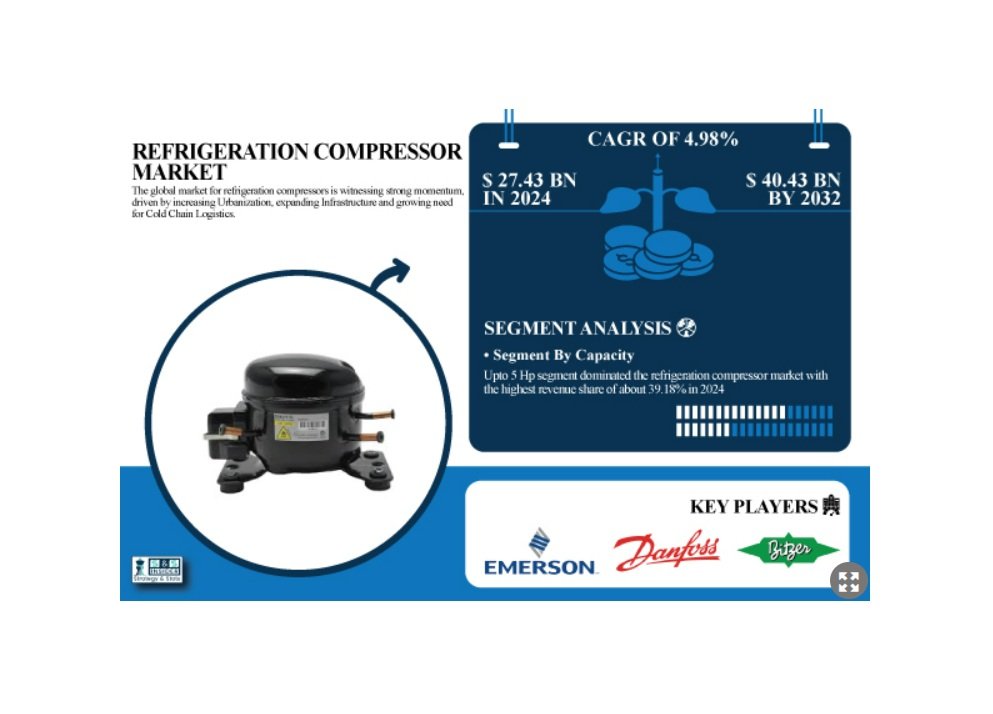Refrigeration compressor market to hit USD 40.43 bn by 2032
The global refrigeration compressor market was valued at USD 27.43 billion in 2024 and is projected to reach USD 40.43 billion by 2032, according to SNS Insider. This represents a compound annual growth rate (CAGR) of 4.98% between 2025 and 2032.
Market expansion is driven by the growth of cold chain infrastructure, particularly in food and pharmaceutical sectors. Increasing demand for perishable food, vaccines, and temperature-sensitive medicines is creating a need for efficient refrigeration systems. According to the Food and Agriculture Organization (FAO), more than 30% of global food loss is linked to inadequate cold storage, further boosting demand for compressors.
In 2024, reciprocating compressors held the largest market share at about 59.46%, while scroll compressors are forecast to grow at the fastest rate of 6.32% over the forecast period. By capacity, units up to 5 Hp led with 39.18% share, while the 10–15 Hp segment is expected to grow fastest at 6.43% CAGR. By application, the residential sector accounted for 66.74% of demand in 2024, but the commercial segment is projected to expand most rapidly at 6.42% CAGR.
By type, hermetic compressors represented 57.22% of the market in 2024, while open compressors are expected to see the highest growth at 6.09% CAGR. Fixed speed compressors accounted for 72.08% share, although variable speed models are projected to increase at 6.35% CAGR. In terms of distribution, the OEM channel led with 61.08% in 2024, while aftermarket sales are expected to grow at 5.95% CAGR.
Regionally, Asia Pacific held the largest share with 34.87% in 2024, supported by urbanization and expansion of household and commercial refrigeration in China and India. North America is forecast to record the fastest growth at 6.32% CAGR, driven by adoption of inverter-based compressors and regulations favoring low-GWP refrigerants. Europe is expected to see steady demand for retrofitting and eco-friendly technologies.
The U.S. refrigeration compressor market alone was valued at USD 4.33 billion in 2024 and is projected to reach USD 6.77 billion by 2032, growing at a CAGR of 5.76%.
